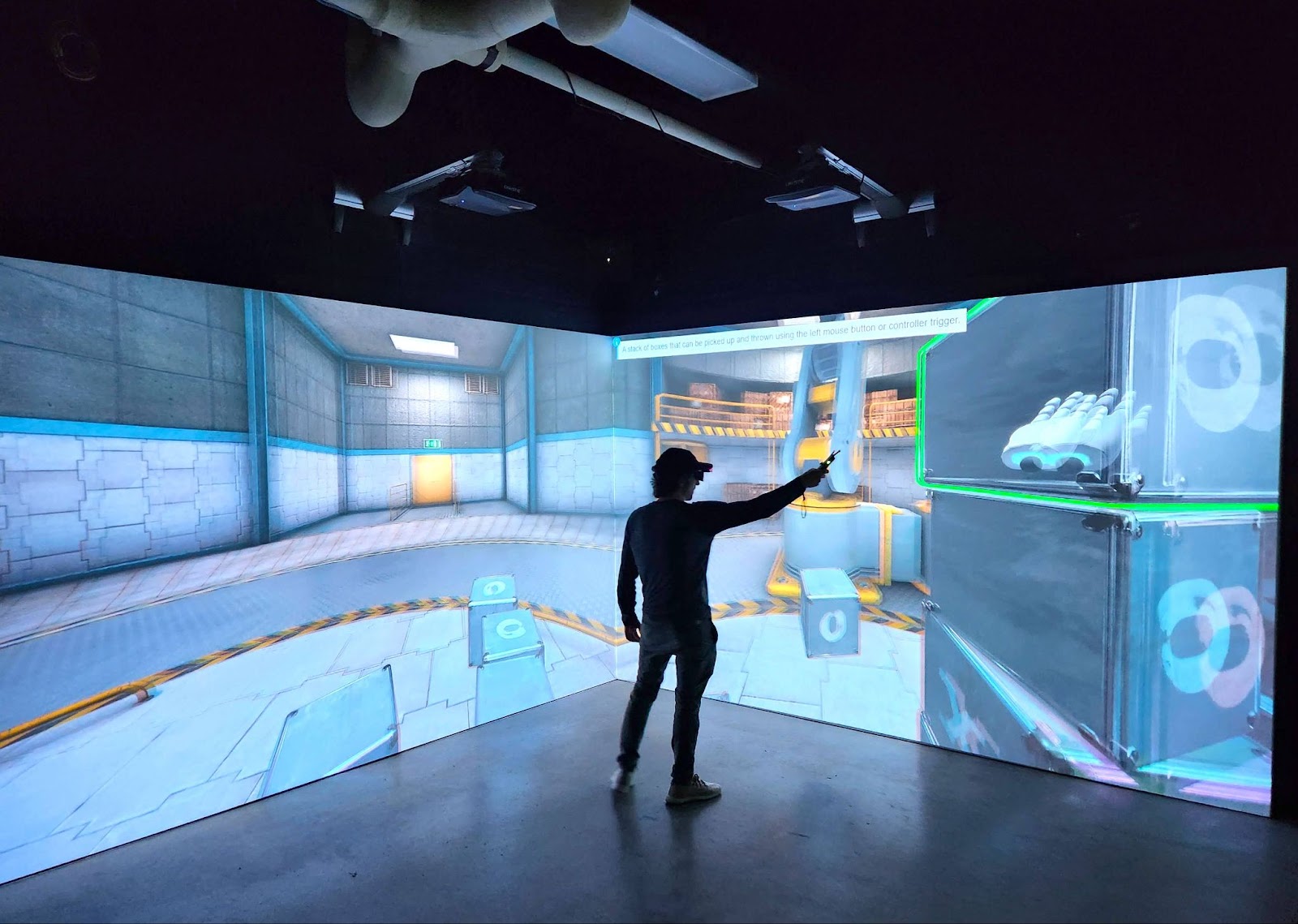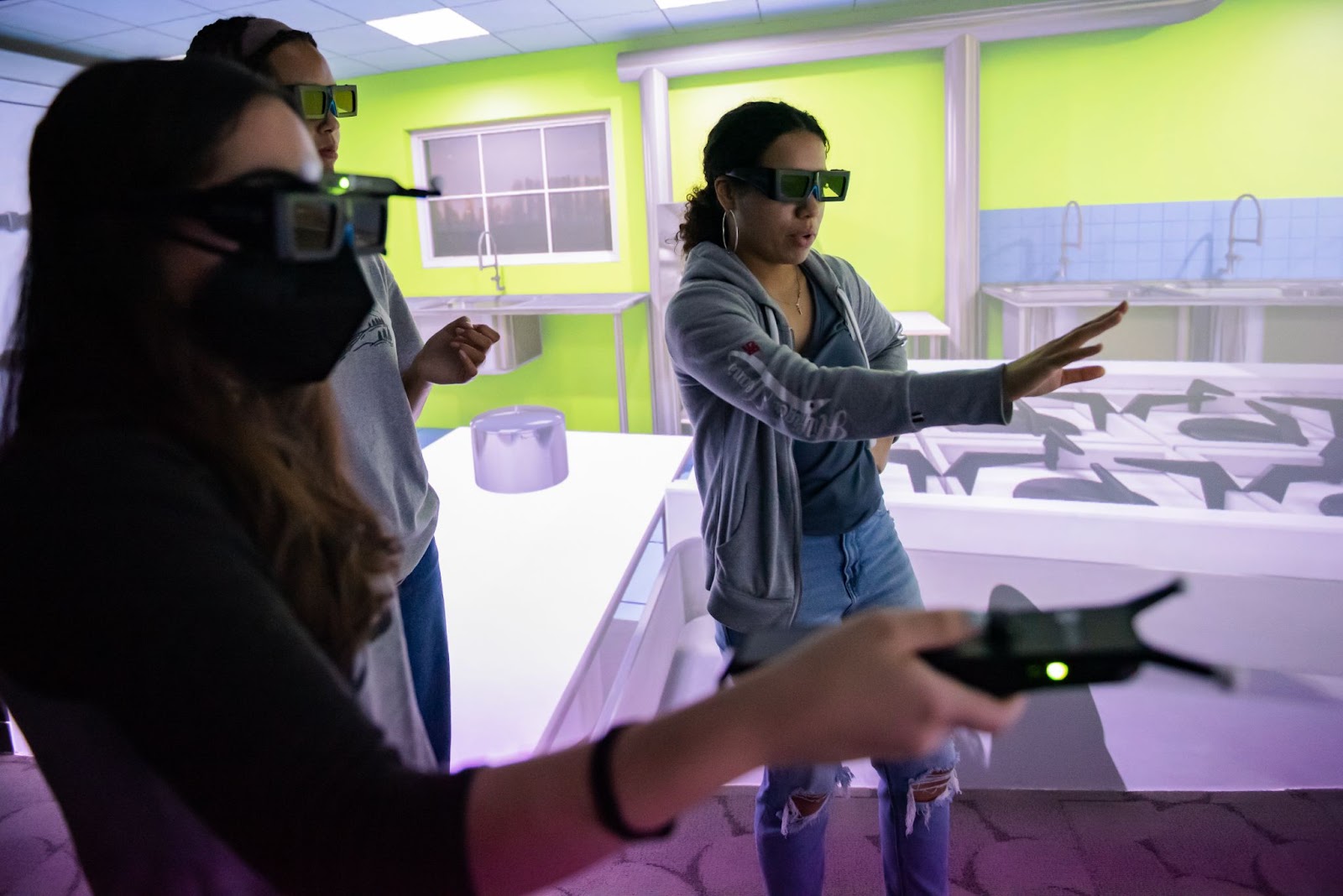

Projection VR, offered by WorldViz, is a cutting-edge technology that enables users to experience immersive virtual environments in a shared physical space. It harnesses the power of high-quality projectors and advanced tracking systems to create large-scale, immersive experiences. By using projection VR, researchers can provide participants with a sense of presence and collaboration, making it ideal for group studies and social experiments.

Advantages of Projection VR in Academic Research
Collaborative Research: Projection VR facilitates group collaboration by allowing multiple participants to interact within the same virtual environment simultaneously. This collaborative aspect is particularly beneficial in fields like psychology, sociology, and education, where researchers can study human interactions and behaviors in a controlled VR setting.
Enhanced Spatial Understanding: In architectural and engineering research, Projection VR offers a holistic view of structures and designs. Researchers can walk through virtual prototypes, gaining a deeper understanding of spatial relationships and identifying potential design flaws.
Cost-Effective: Projection VR can be more cost-effective for large-scale experiments or studies that require a shared immersive experience compared to outfitting each participant with individual headsets. It optimizes resources while maintaining high-quality VR experiences.
Headset VR, on the other hand, provides a deeply personalized immersive experience. Users wear VR headsets that completely envelop them in a virtual environment. WorldViz's Headset VR solutions offer soup to nuts research grade solutions with VR creation software, high-resolution VR headsets, eye tracking and precise motion tracking, making them ideal for individualized research experiences.

Advantages of Headset VR in Academic Research
Precise Data Collection: Researchers can collect detailed data on individual participants' movements, gaze, and interactions in Headset VR, making it ideal for studies that require fine-grained data analysis.
Customization: Headset VR allows researchers to create highly customized and controlled virtual environments. This is invaluable in fields like psychology, where precise stimulus presentation is essential.
Portability: Headset VR setups are portable and versatile, enabling researchers to conduct experiments in various settings outside the research lab, such as clinics, classrooms, or even participants' homes. This flexibility broadens the scope of research possibilities.
While Projection VR and Headset VR each have their unique advantages, combining these technologies in an integrated VR lab offers an unparalleled research experience. Here's how:
1. Comprehensive Data Collection
By using both technologies, researchers can gather a wide range of data points. Headset VR captures individual participant responses, while Projection VR captures group dynamics and interactions. This combined dataset provides a more comprehensive understanding of research subjects.
2. Versatility and Scalability
An integrated lab can cater to a broader range of research projects. Whether it's studying individual behavior in a controlled headset environment or observing group dynamics in a shared projection VR space, the lab can accommodate various research needs. By enabling a flexible combination of individual and group experiences, researchers can optimize the use of VR resources. This cost-effective scalability allows for tailored deployment based on the specific requirements of each research project.
3. Cross-Disciplinary Collaboration
The synergy of Projection VR and Headset VR encourages collaboration among researchers from different fields. This cross-disciplinary approach can lead to innovative insights and breakthroughs that may not be achievable with either technology alone. Researchers can work in tandem within the same virtual space, exploring shared environments.

The integration of Projection VR and Headset VR in an academic research lab represents a cutting-edge strategy for maximizing the potential of VR technologies. Researchers can leverage the strengths of both technologies to conduct comprehensive, versatile, and collaborative studies. This approach not only enhances the quality of research but also paves the way for exciting discoveries across various academic disciplines. WorldViz continues to support academic institutions in their pursuit of knowledge by providing cutting-edge VR solutions that enable groundbreaking research.